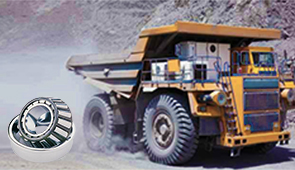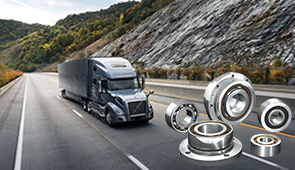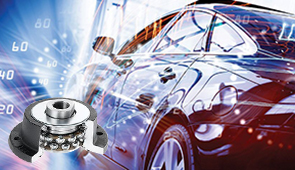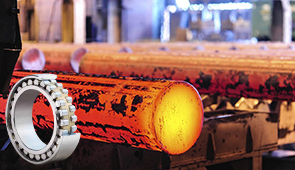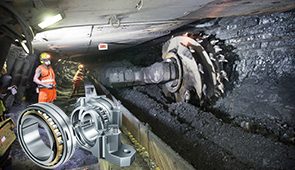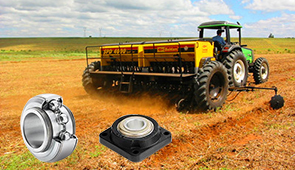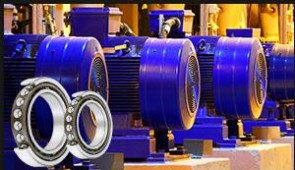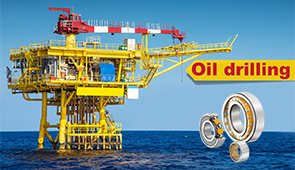Why Seal Bearing is Essential for Performance
Seal bearings are crucial in countless contemporary mechanisms, enabling efficiency and durability across various sectors. From excavators through cars to modern space technology, seal bearings are fundamental in minimizing friction and wear and safeguarding significant elements from airborne pollutants such as dust, moisture, and debris. The bearings’ effectiveness directly correlates to the dependability and operability of the installed equipment, making them crucial in meeting the appropriate standards. This paper discusses the importance of seal bearings in up-to-date applications, their configuration, advantages, design, and other reputable innovations that enhance durability and accuracy. By understanding the importance of these elements, practitioners and amateurs will be able to value their roles for maximal output in today’s ever-changing technological environment.
What are seal bearings, and how do they function?
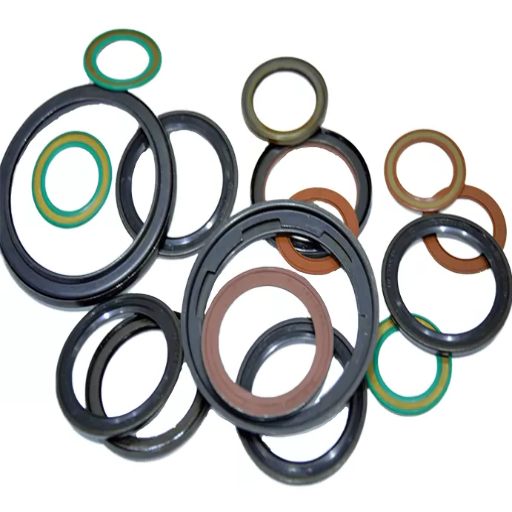
Understanding the essential components of seal bearings
Seal bearings, permitting relative rotation between its inner and outer members while preventing the entrance of contaminants (dirt, moisture, and dust), are employed in several machines where members are subject to relative movement and friction interacts with them, and their structure is designed accordingly. This is accomplished through seal arrangements and bearing surfaces that are fitted and geometrically constructed with close tolerances, respectively. A standard model consists of an inner ring, an outer ring, balls or rollers, a cage, and seals or shields. A seal bearing has three functions: stiffening, spacing, and sealing, which are embodied in the aggregate configuration of the seal. The three key seal-bearing design parameters that will sufficiently impact its performance characteristics include:
Material Composition: The materials used include high-grade stainless steel to prevent corrosion and high-grade alloys to sustain stress.
Seal Type: Contact seals effectively provide sufficient protection against contamination, and non-contact seals are suitable for low-energy applications.
Load Capacity: The maximum amount of axial and radial load capable of being supported by the bearing; its measurements in this instance would be in Newtons (N) or pounds (lbs).
Operating Speed: The rate at which the seal bearing rotates, expressed in revolutions per minute (RPM).
Temperature Range: The temperature limit materials can withstand when the range is from -30°C to more than 150°C.
Lubrication: A seal bearing is usually filled with grease to facilitate easy operation, but the manufacturer recommends the type of grease.
The harmonious balancing of these elements enables seal bearings to achieve the highest efficiency, matching the requirements of concrete industrial and mechanical applications.
The primary functions of bearing seals
Bearing seals perform some essential tasks concerning bearing systems. Apparent tasks include the following:
Prevention of Ingress of Contaminants: Dirt, dust, or water can damage the system or malfunction; IT is responsible for bearing seals to care for such matters. The IP code system rates how effective a seal is, with an example being IP68, which means a high level of effectiveness.
Prevention of Lubricant Leakage: Seals control lubricating oil or grease leakage, which is essential for reducing wear and friction within the bearing assembly. Lithium grease with NLGI 2 is a popular choice among sealed bearings.
Ability to Withstand Loads and Pressure: Internal pressure, external pressure, and other factors can affect the integrity of bearing seals; for instance, radial seals can withstand dynamic pressures typically in the range of 0.05 to 0.3 MPa.
Ability to Withstand Heat: Due to the material composition, the bearing seals can withstand temperatures, typically ranging upto 200 degrees Celsius.
Reduction of Friction: A friction loss allows bearing seals to perform optimally, allowing them to run efficiently. When operating optimally, the frictional coefficient can be between 0.01 and 0.05.
Bearing seals serve valuable purposes and conform to performance requirements, thus ensuring the desired working capability in various industrial and mechanical operations.
Different types of seals used in bearings
Regarding the different types of seals employed in bearings, I would restrict myself to two broad classifications – contact and non-contact seals. Typical contact seals are lip and labyrinth seals, which are preferred when a high sealing performance is required. Such seals successfully combat operational contamination and prevent the escape of fluids and gases. They can maintain a high-degree seal, generally made of NBR or FKM rubber copolymers. For instance, the standard operating temperature for nitrile rubber is between -40 and 275°F (-40 – 135°C), whereas that for fluorocarbon rubber is between -15 to 400°F (-26 to 204°C).
On the contrary, non-contact seals, such as shielded or clearance seals, are aimed at minimizing friction, consequently leading to a better speed performance of the bearing. The non-contact seal is a shaft seal with low friction, permitting high shaft rpm when it is sealed. Depending on the design accuracy, the coefficient of friction for non-contact seals can be in the region of 0.001 to .005. Furthermore, these seals are effective in preventing contaminants from entering the unit but are not as efficient as the contact seals.
Ideally, each type of seal has its operational parameters. For high-speed applications, a non-contact seal with optimal clearance may be appropriate, whereas in environments with higher contamination risk, a contact seal with good material properties is better suited. These technical issues guarantee that the bearing seal selected will meet the operational requirements.
Why are seal bearings essential for optimal performance?
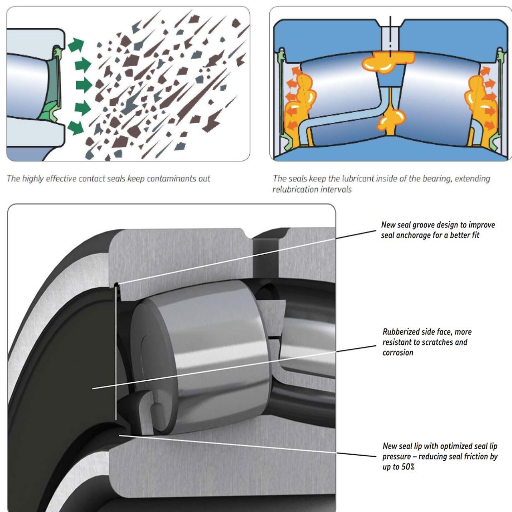
Preventing contaminants from entering the bearing
The serviceability and lifetime of machine parts such as bearings can significantly be reduced by the presence of contaminations such as moisture, dirt, and even dust particles, which can cause corrosion or failure of the parts. Affected bearings would alter the overall operations of the machine systems and severely limit their productivity. Seal bearings are designed to act as a barrier and ensure that such elements do not reach the system as such. It is essential to select and maintain it properly. The following technical parameters should be considered:
The velocity of Flow: More attention should be paid to how fast the seal will have to withstand while running, i.e., the bearing’s RPMs, so that the seal can make contact at all times (measured in meters per second).
Pressure: The selected seals should be strong enough to withstand the pressure of operating systems. The ideal pressure for commonplace operations is two bars, but it would be higher in exceptional cases.
Thermal range: The seals selected should withstand silicone temperature differences between negative thirty and one hundred and eighty degrees Celsius.
Seal-using material: Oil and water diffusion should be considered for the seals applied, and the seal applied should be extremely resistant to the contaminants being used.
Adequately installed, custom-designed seals can increase the reliability of uncontaminated bearings and ensure the correct functioning of machine parts, even in the most challenging conditions.
Maintaining proper lubrication and reducing friction
The correct operating conditions for bearings and seals are guaranteed vital through proper lubrication and friction management. Below are focused responses to a few lubrication issues, provided with substantiated technical parameters.
Choosing the Best Lubricant: The selection of lubricant should suit the operating conditions. Synthetic oils or high-temperature greases should be used for industrial applications that maintain operating temperatures between 120°C to 200°C; for operating temperatures between -40°C to 0°C, low-viscosity oils with low freezing points are recommended for adequate lubrication.
The amount of Lubrication: Over-lubrication and under-lubrication will not produce desirable results. As a rule of thumb, acceptable performance is achieved if 30 to 50 percent of the bearing housing’s internal free volume is filled. This also reduces heat addition arising from friction caused by excessive lubricant.
Intervals for Re-Lubrication: Servicing should be done more frequently. Rotation speed, operating temperature, and other factors affect re-lubrication schedules. For example, if the machine’s standard working temperature is 1500 rpm, re-lubrication will be required every 500 to 1000 hours.
Reducing Amount of Friction: For parts with negligible friction, make sure the surface roughness of precision components is less than 0.25 μm Ra, and make sure components are aligned when installed. Also, using advanced lubricants with MoS2 is appropriate as it massively enhances the ability of a machine to function smoothly.
These parameters manage the machinery’s operating requirements while protecting it from excessive wear, let alone overheating. As a result, the machinery’s efficiency improves significantly, and downtime is reduced considerably.
Extending the lifespan of machinery and equipment
Combining appropriate technical methods with preventive maintenance measures is necessary to prolong the functional life of machines and equipment. Below is a brief sketch addressing the most essential issues and technical aspects of this matter:
Scheduled Maintenance
Carry out regular inspections and routine servicing to afford early attention to any impending damage.
For a mid-size industry machine, this is as per the manufacturer’s instructions or, depending on the work rate, after every 500 working hours.
Lubrication Management
Apply lubricants suitable for existing working conditions, sometimes high temperature or load application.
Examples include ISO VG 68 grade oil, applicable for moderate loads and temperatures, and MoS2 additives, which reduce wear in extreme friction applications.
Precision Alignment and Balancing
Poor alignment leads to inconsistent wear, which can be controlled by applying precision laser alignment tools with tolerances of ±0.02mm.
Operating parts are rotationally balanced to minimize vibrations, which in Class I machinery have vibration tolerances of <0.8mm/s RMS.
Optimal Operating Conditions
Have a controlled environment that maintains temperatures between the indicated values, such as 32°F to 122°F (0°C to 50°C) for the majority of the machines.
Install automatic pressure sensors to continuously check pressure levels and ensure that preset design limits are not violated.
Material and Surface Treatments
High-stress components should be corrosion resistant; thus, stainless steel 316 should be used in severe environments.
PVD or thermal spray coatings are used to obtain a wear-resistant surface with hardness above 1000 HV.
Disease Management and Monitoring
Roll out condition monitoring devices to assess vibration, noise, or thermal changes.
Bearing temperatures should remain below 176°F (80°C), and audibility should not exceed 85 dB in compliance with OSHA regulations.
Generally speaking, machinery can be operated within these practices and physical limits to maximize earnings effectively while considerably increasing mechanical equipment’s life span.
What are the different types of sealing devices used in bearings?
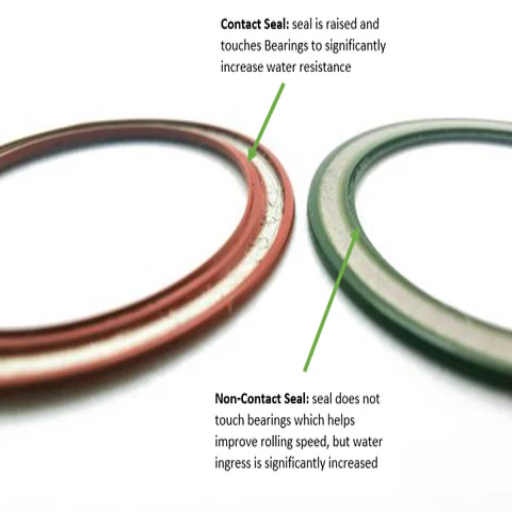
Contact seals: Rubber and felt seals explained
As far as I can identify the contact seals in the bearing system, there is quite a significant difference between rubber and felt seals. To start, rubber seals prevent the ingress of even a minimal amount of contaminants, and because of this, they might seal the contact area and prevent any dirt, water, or even dust from entering. They function well in highly exposed regions and are subjected to extreme temperatures ranging from -40 to about 248 degrees Fahrenheit, Nuiton, or other similar rubber compounds. Moreover, the degree of flexibility and toughness offered is moderately good, which, in turn, causes low frictional wear on the sealing surface.
In contrast, felt seals are produced from synthesized composite fibers and are ideal for scenarios where moderate or average sealing is acceptable, as cost is a priority. Sweet seals’ primary working mechanism is a capillary effect that absorbs the lubricant, which is helpful in non-confined areas. Nevertheless, such seals are not designed for areas with high operational speeds or places with frequent exposure to liquids.
So, in broad terms, rubber seals for harsh requirements or felt seals for dry atmospheres ensure the operating environment and conditions to make your bearings’ working and overall lifetime more efficient.
Non-contact seals: Labyrinth and clearance seals explored
A labyrinth seal is a type of non-contact seal. Such seals do not have direct contact with the rotating parts, though they provide some protection against contaminants that get into the bearing housing. Here’s how each type works and their associated technical parameters:
Labyrinth Seals: A labyrinth seal serves its purpose while inhibiting unwanted elements by allowing entry of only a controlled amount so that there is no unwanted leakage. Increasing the gap’s width or the labyrinth grooves can help the seal further. It is usually suited for mechanical parts spinning at very high speeds. Therefore, its design produces very low heat and friction, enhancing the part. Usually, parameters include gap clearance of about 0.1-0.2 mm and the machine’s rotational RPM, which goes to a thousand, and some depend on the make and materials used.
Clearance Seals: This seal creates a gap between the shaft and the housing. Their basic design and construction make them best suited for low-speed applications. These seals are ideal for hostile environments where flooding with large amounts of lubrication is not an option. The gap height usually exceeds 0.5 mm, making them more expansive than the labyrinth seals. A significant disadvantage is that the seals must use low RPM adapting from 1000 – 2000—further, the greater the gaps, the greater the loss on the seal’s ability to function.
Both seals offer solutions where friction must be kept to a minimum, but they are effective in different environments and have different speed requirements. In instances where the environment is high-speed and fewer contaminants are present, labyrinth seals perform better than clearance seals, which suffice low-tech systems, though simple.
Comparing lip seals and grease seals
When placing lip seals beside grease seals, the first step is to determine how they function and the technical characteristics they have. It is my understanding that lip seals are inner components intended for a tight fit and seal movement while, at the same time, offering protection against penetration of several contaminants such as dirt or moisture. They are usually effective in systems that operate within a range of 0.3 – 0.5 MPa and have speeds that may reach 10,000 revolutions per minute. Their material composition, such as fluoropolymer or nitrile rubber, gives them characteristics that withstand a wide range of working conditions.
In contrast, grease seals are more straightforward in their form and function. Their main job is holding lubrication into parts while controlling outflow and dirt ingress. Such seals perform ideally in places where speed is an issue as they usually do not rotate more than 5000 revolutions per minute and are used in systems that are not highly pressurized but are lubricated at all times instead. Since they are easier to use because they are not as sophisticated, they tend to be cheaper and can be employed in basic mechanical systems. The best choice between these two will depend on which operating parameters cannot exclude speed, pressure, and environment; therefore, maximizing its seal’s efficiency and service life in each application is crucial to the operation.
How do seal bearings improve machinery efficiency?
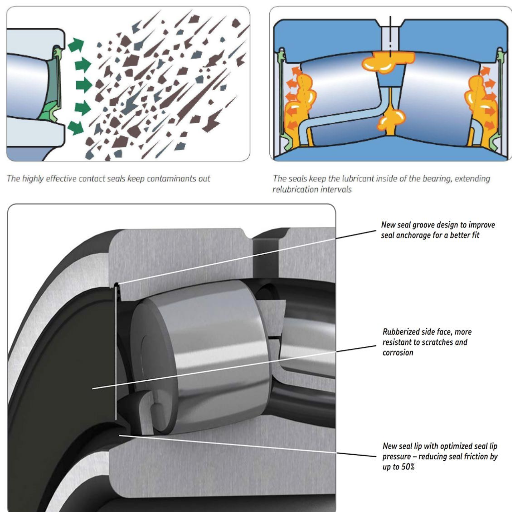
Reducing maintenance requirements and downtime
One of the key benefits that seal bearings offer to equipment is reduced maintenance amounts and downtime. Judging from my experience, these components are in such a manner that they minimize contamination and hold lubricant, thus minimizing abrasion over some time. A case in point, seal bearings allow large intervals between lubrication cycles because seal bearings assist in keeping lubricants in place. This, in turn, reduces the periodic maintenance workload and increases the operational life of machinery components.
The technical parameters include an operating temperature range of -20°C to 120°C for most standard materials, operating rotational speeds of 5,000 RPM in most cases depending on tear design, and the load that can be contacted. These parameters must be maintained according to the conditions under which the machine will be used. To this extent, the purpose of seal bearings is to improve reliability while reducing downtime. Seal bearings encapsulated with these parameters work smoothly and are less prone to failure.
Improving the effectiveness of equipment as a whole
So that the equipment would perform as required, I would begin by identifying seal bearings that are suitable for the specific machine’s operating parameters. For example, I would ensure the seals’ temperature range, such as standard seals, which operate within the -20 to 120 range, would be satisfactory. Also, I would finalize the appropriate speed comparable with the rotary motion required for the machine by considering the speed requirements up to above 5000 RPM and its design specs. Likewise, Load capacity is equally important as it has to be consistent with the equipment’s operational requirements to prevent over-exhaustion.
Taking such variables into hindsight, I can now defend the selection of seal bearings, as they foster better dependability, assist in fewer machine breakdowns, and allow smooth operations even in harsh conditions. These factors make the equipment run more efficiently and help enhance the maintenance practices, which will be more economical over time.
Minimizing energy loss due to friction
To reduce energy losses associated with friction, I make sure that the chosen sealing bearings are made of low-friction materials and have an optimal lubricant. This avoids unnecessary abrasion while enhancing energy performance. I measure frictional torque values – in this case, I verify that they correspond to the request for the application – typically, the target is to have less than 0.5 Nm torque ratings in highly demanding applications. Moreover, I also control the surface finish and tolerances of the parts in contact to check if a smoother surface would not help lessen the resistance during operation.
Material composition: Materials that will be resistant and enable a decrease in friction, like PTFE or even ceramics.
Lubrication type: Synthetic Lubricants that can withstand high temperatures without performance degradation.
Torque ratings: The torque is rated at minimum frictional torque per application.
Operating speed: Operating in conjunction with expeditious speeds of machines, not excluding those exceeding 5000 RPM
Surface finish: Parts machined with an average roughness (Ra) of less than 1 micrometer to help combat friction.
Considering all these technical points, I am confident that the enhanced energy efficiency would be accomplished with the system’s uncompromised reliability.
What factors should be considered when selecting seal bearings?
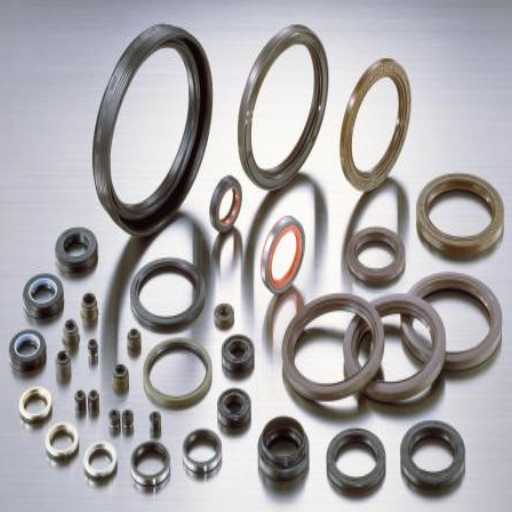
Application-specific requirements and environmental conditions
When choosing seal bearings, I consider the application’s specifics and the environment in which the system is used. These factors are essential to ensure that the bearings perform effectively and for a long time. This is how I deal with them:
Load capacity: I analyze the anticipated radial and axial loads so that the bearings will not have any deformation or failure resulting from stresses exerted on them. With heavy loads, I prefer bearings that have high dynamic and static load ratings.
Temperature range: Due to specific applications that require my products to function well, for instance, in extreme temperatures of between -40°F to 400°F, I assess the temperature range I will be operating in to choose the materials and lubricants that will be fundamental for the function of the product.
Contaminant protection: In most cases, for applications where there is exposure to dust, moisture, or chemicals, I always use seals that have a higher ingress protection (IP) rating (like IP67) to avoid contamination and prolong the life span.
Corrosion resistance: When I anticipate the bearings’ exposure to salt water or other chemicals, I use bearings made of stainless steel or other non-corrosive materials to mitigate the corrosion risk.
Vibration and shock tolerance: I pay attention to shock and vibration for applications exposed to such loads by using bearings meant to bear the impact load and reduce wear by using reinforced cages or other damping features.
This can help me make judgments and choices to improve the application’s performance, dependability, and efficiency.
Size and material considerations for optimal sealing
Regarding sealing, my priority is to meet the application’s specific requirements. I consider the size and material while ensuring optimal sealing is achieved.
Seal sizing: I make it a point to measure precisely the shaft and housing dimensions with the correct seal, as undersizing or oversizing it could lead to unwanted situations such as leaking or wearing out fast. Proper tolerances are necessary; some use ISO 6194 standards for the desired result.
Material expansion: The choice of material depends on the environment and the conditions prevalent in the ecosystem. For instance, I use FKM (Viton) material in high-temperature conditions. Teflon is required when the temperature is around 400 degrees. In low-temperature conditions, nitrile or silicone work well, remaining flexible around -65 degrees Fahrenheit.
Operating conditions: When the seal comes into contact with strong chemicals or oil substances, PTFE or EPDM materials work as they resist harsh environments.
Wear level: For concerns where high speed is a factor, I prefer using PTFE materials. They have low friction coefficients, do not wear out too fast, and do not allow heat to build up.
I, too, must review these parameters. Once I know the operational environment, I can select the seal’s size and material and ensure efficiency and reliability.
Frequently Asked Questions (FAQs)
Q: What are seal bearings, and why are they important?
A: Seal bearings are ball-bearing types, including rubber seals or metal shields to protect the internal components. They are essential for performance because they prevent contamination from dirt, dust, and other particles while preventing lubricant from escaping. This guarantees proper rotation and increases the bearing’s lifespan, making seal bearings crucial in various fields, such as automotive, industrial, and marine locations.
Q: How do rubber seals in bearings contribute to performance?
A: The primary purpose of rubber seals is to protect against contamination and prevent leakage. They construct a wall that prevents dust, dirt, and other contaminants from entering the bearing while preventing lubricant leakage. This, in turn, helps ensure that the bearing is optimally functioning and increases the product’s life. Additionally, good resistance to different types of chemicals and other working conditions is experienced when using rubber seals.
Q: Explain the disadvantages of seals on bearings.
A: Metal seals, usually stainless steel, provide optimum protection in a corrosive environment. They are also resistant to high temperatures, chemicals, and abrasives. The sealing performance of a metal or hybrid seal is vastly better than that of rubber seals, especially in conditions that might cause the rubber to degrade rapidly. Also, metal seals assist in standardizing the bearing’s overall size, allowing such bearings to be used in high-precision factories, notably in the automobile and air industries.
Q: What mechanism do they use to stop oil leakage in seals?
A: Seal bearings contain specially constructed sealing devices with a sealing edge that seals against the inner ring or the shaft. This edge of the seal shaft does not allow oil or other lubricant to leak from the bearing assembly. In some designs, a spring is incorporated so that the feather is compressed in the desired position, pressing against the face of the edge sealing. That also enabled it to prevent leakage efficiently. Leakage of oil is prevented because seal bearings guarantee sufficient oil in contact with moving parts, as a result the moving parts are well oiled.
Q: Do seal bearings come in metric and inch sizes?
A: Seal bearings have been developed in metric and inch dimensions to meet international standards and practices. This provides a broad assortment of bearings to accommodate various diameters of shafts and housings. Suppose a metric bearing is needed for European machinery or an inch bearing is necessary for American machinery. In that case, there are options to meet such needs regarding bearing fit and achieving performance requirements.
Q: What are the benefits of seal bearings for cushion block units?
A: Seal bearings dramatically improve the operational quality of pillow block units due to their ability to protect internal components from getting hit by dirt particles. When pillow blocks are installed in agricultural or mining equipment where blanking is required, which exposes the block to harsh surroundings, seal bearings shield the bearing housing from dust, dirt, or water. This safeguarding practice enhances friction-free rotation and reduces the need for servicing and repairs while increasing the life span of the overall pillow block unit.
Q: What materials are commonly used to manufacture seal bearings?
A: Detail-bearing seals always consist of combined materials. Bearing rings and bearing balls are, by and large, composed of some top steel grade or stainless steel material. Seals can be made of launched synthetic rubber compounds for flexibility and chemical resistance or metal (often stainless steel) for thermal applications. In some cases, special bearings might even have ceramic components designed for extreme conditions. The use of materials is always a function of required operating conditions and performance parameters.
Q: How do I choose the most suitable seal bearing for my application?
A: To find the most appropriate seal bearing, consider operating temperature, speed, load, and environmental conditions. Assess whether rubber seals or metal shields make more sense in your case. Ensure proper fit by imaging shaft size and housing size. For exact applications, shoulder the extent of contamination protection required. Do reach out if you would like assistance in making the optimal selection, member of the bearing representatives would be ready to inform you, the state of your application can help them determine the best course of action.
UCTH213-40J-300 with Setscrew(inch)
CNSORDERNO: Normal-duty(2)
TOGN: UCTH213-40J-300
SDI: B-R1/8
SD: 2 1/2
UCTH212-39J-300 with Setscrew(inch)
CNSORDERNO: Normal-duty(2)
TOGN: UCTH212-39J-300
SDI: B-R1/8
SD: 2 7/16
UCTH212-38J-300 with Setscrew(inch)
CNSORDERNO: Normal-duty(2)
TOGN: UCTH212-38J-300
SDI: B-R1/8
SD: 2 3/8
UCTH212-36J-300 with Setscrew(inch)
CNSORDERNO: Normal-duty(2)
TOGN: UCTH212-36J-300
SDI: B-R1/8
SD: 2 1/4
UCTH211-35J-300 with Setscrew(inch)
CNSORDERNO: Normal-duty(2)
TOGN: UCTH211-35J-300
SDI: B-R1/8
SD: 2 3/16
UCTH211-34J-300 with Setscrew(inch)
CNSORDERNO: Normal-duty(2)
TOGN: UCTH211-34J-300
SDI: B-R1/8
SD: 2 1/8









